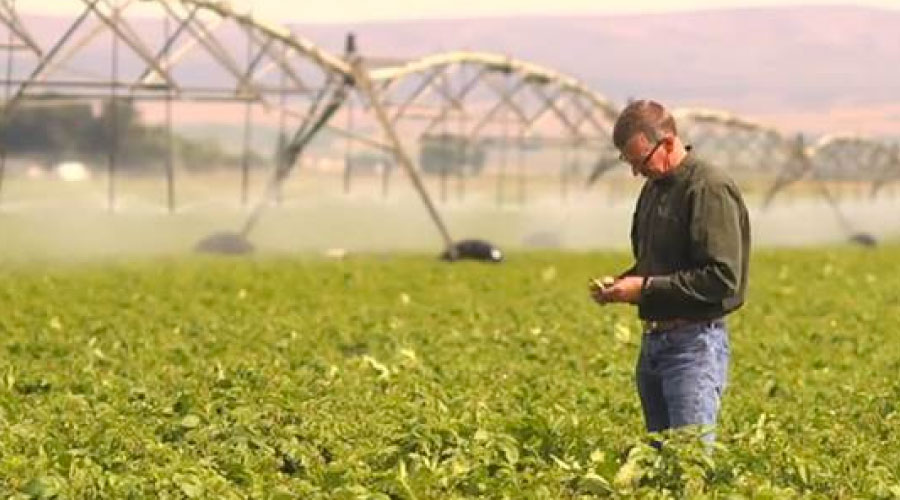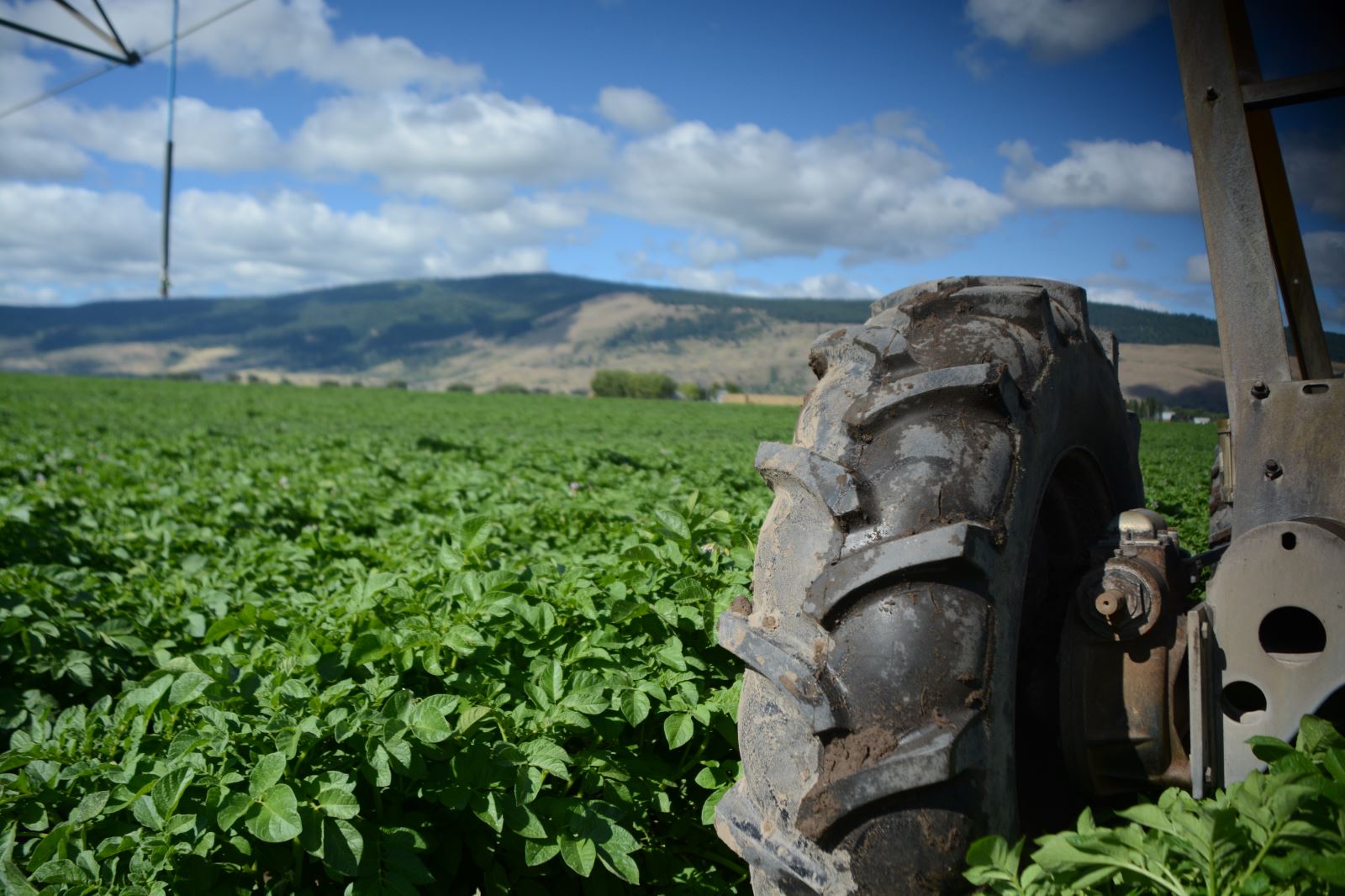Source: The Packer
Good potato growing conditions and harvest timing running a few days later than normal are reported by Washington and Oregon potato industry leaders.
“I would say we are on the later side of normal (in the Columbia Basin) by a few days,” said Dan Strebin, owner and manager of Troutdale, Ore.-based Strebin Farms LLC.
Plant growth through late June was very healthy, and tuber sizing was normal, he said.
The company has started harvest as early as July 20 to July 25 in some previous years, but this year, the optimum start date could be about July 30.
“So far, literally, it has been an absolutely perfect growing season,” said Chris Voigt, executive director of the Washington Potato Commission, Moses Lake.
While cool weather and rain earlier in the season set the crop about two weeks behind normal, Voigt said recent weather has caught the crop up to just a few days behind normal.
Voigt said the first potato variety coming out of the fields will be shepody, a processing variety that will be harvested starting July 18. After that, fresh yellow and red potatoes will be harvested from the Yakima region.
Russet norkotah harvest could begin by July 24, he said.
 Temperatures in late June were in an ideal range of 50s at night to the low 80s, and Voigt said pest pressures were low.
Temperatures in late June were in an ideal range of 50s at night to the low 80s, and Voigt said pest pressures were low.
“All the fields I’ve seen look really healthy and nice,” said Dale Hayton, sales manager for Valley Pride Sales, Burlington, Wash.
Potato acreage has been stable in Washington in recent years, near 170,000 acres, and no big acreage swings are anticipated this year.
Voigt said processing uses — primarily frozen potato processing — take about 90% of Washington potato volume. High yields and consistent quality, combined with access to deepwater ports in Seattle-Tacoma to ship to Far East markets, have been key in the strength of the processing market.
Strong global demand for frozen potatoes, growing at 6% to 8% annually, will put pressure on potato growers to send even more of their crop to processors in future seasons, Voigt said.
“The processors are reaching out to fresh growers and saying, ‘Hey, would you grow process potatoes?’” he said. “We’ve seen some of that ... and we’re going to see continued pressure on the fresh industry.”
In addition to the active potato processing market, Strebin said the active hay market also has growers’ attention and competes for ground.
Voigt said organic potatoes account for about 2% of total production in Washington, split evenly between fresh and processing uses.
Washington fresh potato shipments in 2017 totaled 22.9 million 50-pound cartons, up from 20.1 million cartons in 2016, according to the U.S. Department of Agriculture.
Washington state potato numbers
- 170,000 acres in production in recent years
- Around 10% for the fresh market
- Fresh shipments totaled 22.9 million 50-pound cartons in 2017, up from 20.1 million cartons in 2016
- Organic potatoes make up 2% of total production (fresh and processed)
Oregon state potato numbers
- 38,900 harvested acres in recent years
- 12% for the fresh market
- Fresh shipments totaled 5.3 million 50-pound cartons shipped in 2017, up from 5.1 million cartons in 2016
In Oregon, harvested potato acreage was 38,900 acres in 2017, unchanged from 2016 and 2015.
Bill Brewer, executive director of the Portland-based Oregon Potato Commission, said Oregon’s fresh potato market represents about 12% of the state’s production.
 Acreage could decline in the Klamath Falls growing region in 2018 because of tight water supplies. On the other hand, acreage could grow in the Blue Mountain-Hermiston area on the Washington border.
Acreage could decline in the Klamath Falls growing region in 2018 because of tight water supplies. On the other hand, acreage could grow in the Blue Mountain-Hermiston area on the Washington border.
“The production should be up a little bit because we’re moving acres from an area that has a little lower production per acre to an area that has a higher production per acre, and it will be a shift more into the process type potato rather than the fresh or chip potato,” he said.
Oregon shipped 5.3 million 50-pound cartons in 2017, up from 5.1 million cartons in 2016.
By way of comparison, the USDA reported Idaho’s fresh shipments in 2017 were 73.9 million 50-pound cartons, up from 70.4 million cartons in 2016.
Idaho growers harvested 309,000 fall potato acres in 2017, off from 324,000 acres in 2016.
The USDA reported the combined average annual per carton shipping point price for potatoes from Idaho, Washington and Oregon in 2017 was $12.86 per carton, down from $20.87 in 2016 and up from $11.33 in 2015.
Trade concerns
Given concern about retaliatory tariffs on frozen potato exports related to U.S. tariffs on steel and aluminum, Strebin said it appears processors are being cautious about contracting for more acres this year.
“If the tariffs are averted, that’s so much the better because there will be more demand,” Strebin said.
Because of high global demand for frozen potatoes, Voigt said the industry may be in a better position to avoid economic loss from the retaliatory tariffs. Although the industry expects to lose significant market share in Canada for frozen potatoes if Mexican retaliatory tariffs persist, other markets may help compensate.
“If there’s any time in history where you are faced with a lot of international retaliatory tariffs, this is probably the best time to be faced with that just because the demand is so strong,” he said.
Truck concerns
Long term, rising truck rates are a competitive concern for Northwest potatoes, Strebin said, creating opportunities for regional potato deals.
“You have freight rates going to the East Coast right now that are $9 per 50-pound (carton),” he said.
With the average price of russet potatoes recently at $9 per carton, that gives East Coast producers a head start in the marketplace, he said. “It opens up a lot of potential for competition.”
Hayton said although Valley Pride Sales sells plenty of potatoes in the Northwest, it needs all of its markets, and tight trucks don’t make it easy.
“I don’t know if (short truck supplies) are going to get a whole lot better,” he said. “I keep hearing that these trucking companies are just having a hard time filling seats.”